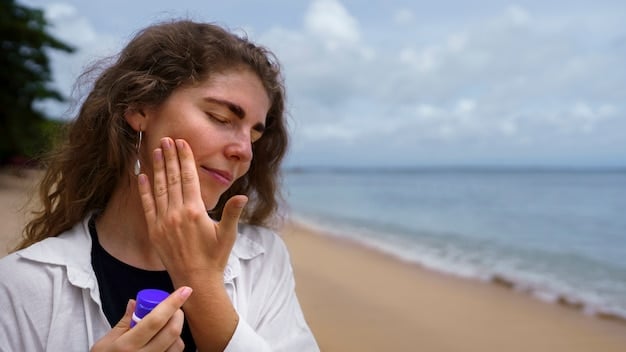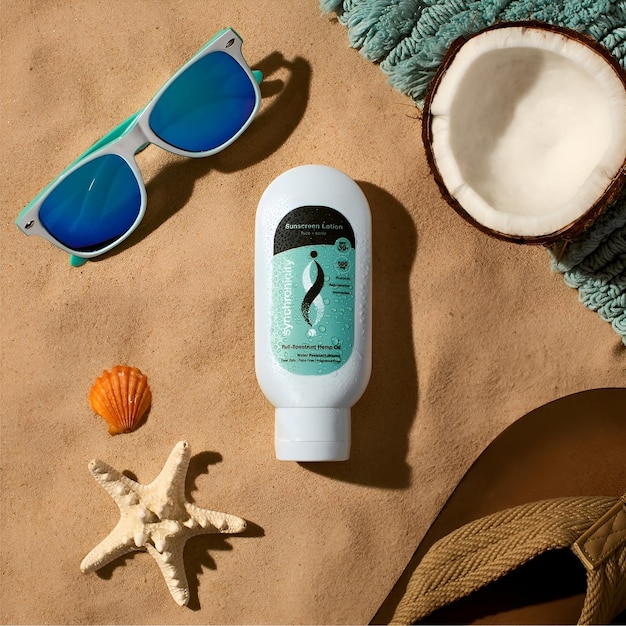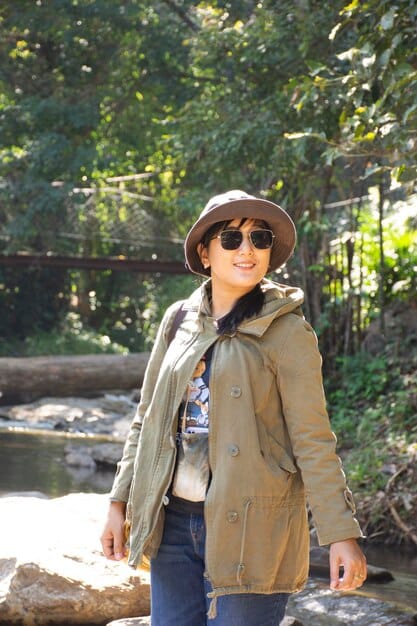Protect Your Skin from Sun Damage: 2025 Sunscreen Guide for US Consumers

For US consumers, protecting skin from sun damage involves understanding and applying current sunscreen guidelines, as UV exposure significantly contributes to premature aging and skin cancer risks, necessitating a proactive and informed approach to daily skincare.
As the sun’s rays intensify and our understanding of their effects evolves, the imperative to Protect Your Skin from Sun Damage: Updated 2025 Sunscreen Guide for US Consumers becomes more critical than ever. This guide aims to demystify recent advancements and provide actionable insights for safeguarding your epidermal health.
Understanding UV Radiation and Its Impact on Skin Health
Ultraviolet (UV) radiation, an invisible component of sunlight, plays a significant role in our daily lives, influencing everything from vitamin D synthesis to skin aging. Comprehending the nuances of UV light is foundational to effective sun protection
strategies.
The sun emits three main types of UV radiation: UVA, UVB, and UVC. While UVC is largely absorbed by the Earth’s ozone layer, UVA and UVB rays reach our skin, each with distinct effects. UVA rays penetrate deeper into the skin’s layers, contributing
to premature aging, wrinkles, and indirectly, to some skin cancers. UVB rays are primarily responsible for sunburn and play a more direct role in the development of skin cancer, including melanoma.
The Long-Term Consequences of Unprotected Sun Exposure
Chronic, unprotected exposure to UV radiation can lead to a cascade of unwelcome dermatological and health issues. Beyond the immediate discomfort of sunburn, the cumulative damage can manifest years later.
- Premature Aging: UV radiation breaks down collagen and elastin, essential proteins that provide skin with its firmness and elasticity, leading to fine lines, wrinkles, and sagging.
- Hyperpigmentation: Sunspots, age spots, and uneven skin tone are common results of excessive sun exposure, as melanin production is stimulated to protect the skin, often in an irregular fashion.
- Skin Cancers: This is perhaps the most serious consequence. Basal cell carcinoma, squamous cell carcinoma, and melanoma are directly linked to UV damage. Melanoma, while less common, is the most aggressive form.
- Immune System Suppression: UV radiation can suppress the skin’s local immune functions, potentially reducing its ability to fight off infections and increasing susceptibility to certain diseases.
Even on cloudy days, UV rays penetrate clouds, highlighting the need for year-round sun protection. The reflection off surfaces like sand, snow, and water can amplify exposure, making awareness of surroundings crucial. Understanding these impacts
underscores the importance of a comprehensive sun protection regimen, starting with the right choice of sunscreen.
Decoding Sunscreen Labels: What US Consumers Need to Know for 2025
Navigating the world of sunscreen can be complex, with an array of terms and numbers on every bottle. For US consumers, making an informed choice in 2025 means understanding what those labels truly signify and how they relate to the latest FDA
guidelines.
The primary measure of a sunscreen’s efficacy is its Sun Protection Factor (SPF). SPF indicates how much protection a sunscreen offers against UVB rays. An SPF of 30, for instance, theoretically allows you to stay in the sun 30 times longer before
burning than if you had no sunscreen on. However, proper application significantly impacts this. A common misconception is that higher SPF numbers offer exponentially greater protection. While SPF 50 offers slightly more protection than SPF 30, the
difference is marginal, and no SPF offers 100% protection.
Broad-Spectrum Protection and Water Resistance
A critical factor for 2025 is broad-spectrum protection. This means the sunscreen protects against both UVA and UVB rays. While SPF measures UVB protection, the “broad-spectrum” designation ensures you’re also guarding against UVA-induced aging and
other damage. Always look for this on the label. Without it, you’re only getting partial protection.
- Water Resistance: Sunscreens are no longer allowed to be marketed as “waterproof” or “sweatproof.” Products can only claim to be “water resistant” for either 40 or 80 minutes, which must be clearly stated on the label. This means
the SPF is maintained after 40 or 80 minutes of swimming or sweating. - Reapplication: Regardless of water resistance claims, all sunscreens need to be reapplied frequently – at least every two hours, or more often if swimming or sweating.
Furthermore, the term “non-comedogenic” indicates that the product is formulated not to clog pores, which is important for individuals prone to acne. For sensitive skin, “hypoallergenic” or “fragrance-free” options are advisable to minimize the risk
of irritation. Understanding these terms empowers consumers to select products that not only protect effectively but also align with their specific skin needs.
Chemical vs. Mineral Sunscreens: What’s Best for You in 2025?
The sunscreen market primarily features two types: chemical and mineral (or physical) sunscreens. Each works differently to protect the skin from UV radiation, and understanding these mechanisms is key to choosing the best option for your lifestyle
and skin type in 2025.

How They Work and Their Key Differences
Chemical sunscreens typically contain organic compounds such as oxybenzone, avobenzone, octinoxate, and octisalate. These active ingredients absorb UV rays as they penetrate the skin, converting them into heat, and then releasing this
heat from the skin. They are often lightweight, easy to rub in, and less likely to leave a white cast, making them cosmetically appealing for daily wear.
- Pros: Light texture, invisible on skin, easier to apply evenly.
- Cons: May cause skin irritation for some, can take 15-20 minutes to become effective after application, some ingredients have been linked to environmental concerns (e.g., coral reefs).
Mineral sunscreens (also known as physical sunscreens) use zinc oxide and titanium dioxide as their active ingredients. These natural minerals sit on top of the skin, forming a physical barrier that reflects and scatters UV rays away
from the skin, much like a shield. They are often recommended for sensitive skin types, as they tend to be less irritating.
- Pros: Immediate protection upon application, generally better for sensitive or acne-prone skin, considered “reef-safe” when formulated without nanoparticles.
- Cons: Can leave a white cast, may be thicker and harder to rub in, especially in older formulations. Newer micronized versions have significantly reduced the white cast.
Recent regulatory updates and ongoing research continue to shape the conversation around sunscreen ingredients. The FDA has proposed stricter guidelines for active ingredients, seeking more safety data for most chemical filters. Zinc oxide and titanium
dioxide are currently the only two active ingredients recognized as GRASE (Generally Recognized as Safe and Effective) for sunscreen use by the FDA without further data requirements. This regulatory landscape influences formulation, pushing brands
towards more thoroughly substantiated options. Your choice between chemical and mineral should factor in personal skin sensitivity, environmental concerns, and aesthetic preferences.
Sunscreen Application Best Practices for Optimal Protection in 2025
Having the right sunscreen is only half the battle; knowing how to apply it correctly is equally vital for maximizing its protective benefits. Even the most highly-rated product will fall short if not used properly. Optimal application often means
using more than you think and being diligent with reapplication.
Start by applying sunscreen generously to all exposed skin. A common rule of thumb is to use about an ounce (enough to fill a shot glass) for your entire body for optimal coverage. Many people apply far less than is needed, significantly reducing the
effective SPF. Don’t forget often-missed areas like the ears, neck, tops of feet, and scalp (especially if hair is thinning or styled to expose skin). For the face, a nickel-sized dollop is usually sufficient.
Timing and Reapplication Are Key
The timing of application matters, especially for chemical sunscreens. Chemical sunscreens need about 15 to 20 minutes to absorb into the skin and begin working effectively. Mineral sunscreens, on the other hand, provide immediate protection upon
application. Both types, however, require regular reapplication.
- Every Two Hours: Reapply sunscreen at least every two hours, or more frequently if you are swimming, sweating profusely, or towel drying. Even “water-resistant” formulas lose effectiveness over time and with activity.
- Full Coverage: Ensure an even layer without missing spots. Sunburn often occurs in un-sunscreened areas.
- Under Makeup: If you wear makeup, apply sunscreen as the last step in your skincare routine before applying cosmetics. Many makeup products contain SPF, but relying solely on them for adequate protection is often insufficient.
Remember that sunscreen is just one component of a comprehensive sun protection strategy. Combining it with other protective measures will significantly enhance your defense against UV damage. Consistency in application and reapplication is the true
secret to effective sun protection, ensuring your skin remains safeguarded throughout the day.
Comprehensive Sun Protection Beyond Sunscreen
While sunscreen is an indispensable tool in our arsenal against sun damage, it is part of a broader, more effective strategy. Relying solely on sunscreen, even with diligent application, risks underestimating the pervasive nature of UV radiation. A
holistic approach combines various tactics to minimize exposure and maximize skin health.
Seeking shade is one of the simplest yet most effective ways to reduce UV exposure. Between 10 a.m. and 4 p.m., the sun’s rays are strongest. During these peak hours, plan your outdoor activities to coincide with shaded areas or limit your time
outdoors. Trees, umbrellas, and canopies provide natural and artificial barriers against direct sunlight, significantly cutting down on the amount of UV radiation reaching your skin.
Protective Clothing and Accessories
Clothing acts as a physical barrier, offering an immediate and often superior form of sun protection compared to sunscreen alone. Look for garments with a Ultraviolet Protection Factor (UPF) label. Similar to SPF, UPF indicates how much UV radiation a
fabric blocks.
- Hats: A wide-brimmed hat provides excellent protection for your face, neck, and ears, areas highly susceptible to sun damage.
- Sunglasses: Choose sunglasses that block 99% or 100% of both UVA and UVB rays. Quality sunglasses protect your eyes from cataracts and the delicate skin around them from premature aging.
- Long Sleeves and Pants: Tightly woven fabrics, especially those designed for sun protection, offer substantial coverage. Darker colors and unbleached cotton generally provide better protection than lighter or bleached fabrics.

Hydration and diet also play a supporting role in skin health, bolstering its natural defenses. While no food can replace sunscreen, antioxidants found in fruits and vegetables can help combat free radical damage from sun exposure. By combining
sunscreen with these practical measures, you create a robust, multi-layered defense system, ensuring maximum protection for your skin in 2025 and beyond.
Meeting Specific Needs: Sunscreen for Diverse Skin Types and Conditions
The “one-size-fits-all” approach rarely works when it comes to skincare, and sunscreen is no exception. Recognizing that different individuals have unique dermatological profiles and sensitivities is crucial for selecting a sunscreen that not only
protects but also complements their specific needs. Tailoring your sunscreen choice to your skin type and any pre-existing conditions ensures comfort and compliance.
For those with sensitive skin or conditions like rosacea or eczema, mineral sunscreens containing zinc oxide and titanium dioxide are often the preferred choice. These ingredients are less likely to cause irritation or allergic reactions compared to
certain chemical filters, as they sit on the skin’s surface rather than being absorbed. Look for formulations that are fragrance-free, alcohol-free, and paraben-free to further minimize potential irritants.
Addressing Acne-Prone and Oily Skin
Individuals with acne-prone or oily skin often shy away from sunscreen fearing it will exacerbate breakouts. However, sun exposure can worsen post-inflammatory hyperpigmentation (dark spots left after acne heals), making sunscreen essential.
- Non-Comedogenic: Always choose products labeled “non-comedogenic” or “non-acnegenic,” meaning they are formulated not to clog pores.
- Oil-Free/Gel Formulas: Look for lightweight, oil-free serums, gels, or fluid lotions. Some excellent options now come in mattifying finishes to reduce shine.
- Sensitive Chemical Filters: For those who prefer chemical sunscreens, products with avobenzone or ecamsule may be less irritating than oxybenzone, though mineral options are often still gentler.
For dry skin, sunscreens that include moisturizing ingredients like hyaluronic acid, glycerin, or ceramides can provide added hydration while protecting. Tinted sunscreens offer a dual benefit, providing UV protection while evening out skin tone,
reducing the need for additional makeup. Furthermore, sunscreens specifically formulated for children should be gentle, broad-spectrum, and water-resistant, often favoring mineral active ingredients due to their sensitive skin. Consulting with a
dermatologist can provide personalized recommendations, ensuring your sun protection strategy is perfectly aligned with your skin’s demands.
Emerging Trends and Innovations in Sun Protection for 2025
The field of sun protection is dynamic, with continuous advancements aimed at improving efficacy, user experience, and environmental impact. As we look towards 2025, several exciting trends and innovations are emerging, promising more effective and
user-friendly solutions for safeguarding our skin. These developments reflect a growing understanding of UV science and consumer demands for sustainable and comfortable products.
One significant area of innovation is the development of next-generation UV filters. While zinc oxide and titanium dioxide remain stalwarts in mineral formulations, new chemical filters, particularly those developed and approved in Europe and Asia
(such as Tinosorb S, Tinosorb M, Mexoryl SX, and Uvinul A Plus), offer superior broad-spectrum protection and photostability compared to older filters. While many of these are still awaiting FDA approval in the US, their eventual introduction could
revolutionize sunscreen formulations available to American consumers, offering higher efficacy with potentially less irritation.
Smart Sun Care and Environmental Considerations
Technology is also playing an increasing role in sun protection. Wearable UV sensors and smartphone apps are becoming more sophisticated, providing real-time UV index data and personalized reminders for sunscreen reapplication based on individual skin
type and activity levels. This “smart sun care” approach empowers users to make more informed decisions about their exposure, moving beyond simple estimations.
- Reef-Safe Formulations: Growing environmental awareness has spurred a demand for “reef-safe” sunscreens, specifically those formulated without oxybenzone and octinoxate, chemicals known to harm coral reefs. Many brands are now
prioritizing sustainable sourcing and eco-friendly packaging. - Hybrid Formulations: Combining the best of both worlds, hybrid sunscreens blend mineral and chemical filters. These aim to offer the broad-spectrum protection and cosmetic elegance of chemical sunscreens with the gentleness and
stability of mineral sunscreens, often resulting in formulas that are less likely to leave a white cast and are suitable for sensitive skin. - Antioxidant Infusion: Many new sunscreens are fortified with antioxidants (like vitamin C, E, or ferulic acid). While not replacing UV filters, these antioxidants help neutralize free radicals generated by UV exposure, providing an
added layer of defense against environmental damage.
These innovations signify a comprehensive evolution in sun protection, moving towards products that are not only more protective and comfortable but also align with broader health and environmental values. Staying informed about these trends will
enable US consumers to continually optimize their sun protection strategies, ensuring their skin remains healthy and resilient against the ever-present threat of UV damage.
Common Sunscreen Myths Debunked for US Consumers in 2025
Despite widespread awareness campaigns, several myths about sunscreen and sun protection continue to circulate, leading to misconceptions that can compromise skin health. Dispelling these inaccuracies is crucial for US consumers to make truly informed
decisions about safeguarding their skin. Understanding the facts helps in adopting effective and consistent sun protection habits.
One prevalent myth is that higher SPF numbers (e.g., SPF 100) offer significantly more protection than SPF 30 or 50. While SPF 50 blocks approximately 98% of UVB rays and SPF 30 blocks 97%, SPF 100 offers only marginally higher protection at about
99%. The slight increase in protection is often overshadowed by a false sense of security, leading people to reapply less frequently. The key is consistent reapplication of at least SPF 30 broad-spectrum sunscreen, not just a very high SPF number.
Debunking Key Misconceptions
- “I don’t need sunscreen on cloudy days.” False. Up to 80% of the sun’s UV rays can penetrate clouds. Cloud cover can scatter and amplify UV light, especially if thin. Sunscreen is a year-round necessity, regardless of weather.
- “My dark skin means I don’t need sunscreen.” False. While individuals with darker skin tones have more melanin, which offers some natural protection, they are still susceptible to UV damage, including sunburn, premature aging, and
skin cancer. Skin cancer in people of color is often diagnosed at a later, more dangerous stage. - “Sunscreen prevents Vitamin D absorption.” Partially false. While sunscreen does reduce vitamin D synthesis, studies show that most people still get enough vitamin D even with regular sunscreen use, especially if they spend short
periods outdoors without it or consume fortified foods/supplements. The risk of skin cancer far outweighs potential vitamin D deficiency from sunscreen. - “Sunscreen from last year is still good.” False. Sunscreens typically have a shelf life of about three years, but once opened, their efficacy can degrade faster, especially if exposed to heat. Check the expiration date; if no date is
present, write the purchase date on the bottle and discard after one year.
By addressing these common myths, consumers can avoid pitfalls that undermine their sun protection efforts. Accurate information is a powerful tool in practicing genuine preventive skincare, ensuring that the strategies adopted are based on scientific
facts rather than popular misconceptions.
| Key Point | Brief Description |
|---|---|
| ☀️ Broad Spectrum | Mandatory for protection against both UVA (aging) and UVB (burning) rays. |
| 🧴 Mineral vs. Chemical | Choose based on skin type and preference; mineral (zinc, titanium) often preferred for sensititve skin. |
| ⏰ Reapply Regularly | Every 2 hours, or more if swimming/sweating, regardless of SPF or water resistance. |
| 🕶️ Holistic Protection | Combine with shade, UPF clothing, and sunglasses for comprehensive defense. |
Frequently Asked Questions About Sunscreen and Sun Protection
▼
Broad-spectrum means the sunscreen protects against both UVA and UVB rays. UVA rays contribute to skin aging and some cancers, while UVB rays are responsible for sunburn. Without broad-spectrum, you’re only getting partial protection, so always look
for this designation on the label.
▼
Yes, sunscreen does expire. Most sunscreens are formulated to be effective for about three years. After this period, the active ingredients can degrade, reducing their protective capabilities. Always check the expiration date on the packaging, and
discard any sunscreen past its prime to ensure optimal efficacy.
▼
While makeup with SPF offers some protection, it’s generally not enough for comprehensive coverage. You’d need to apply a much thicker layer of makeup than typically worn to achieve the SPF indicated on the product. It’s best to use a dedicated
broad-spectrum sunscreen as your primary defense, applied before makeup.
▼
For full body coverage, a good rule of thumb is to use about one ounce of sunscreen, or enough to fill a shot glass. For the face alone, aim for a nickel-sized amount. Applying too little significantly reduces the marked SPF, so liberal application
is key to achieving the stated protection.
▼
Yes, “reef-safe” sunscreens, typically those free of oxybenzone and octinoxate, are gaining importance due to growing concerns over their impact on coral reefs and marine life. While research is ongoing, choosing these formulations contributes to
reducing potential environmental harm, especially if you spend time in marine ecosystems.
Conclusion
As we navigate 2025, safeguarding our skin from sun damage transcends a simple recommendation; it’s an informed, proactive lifestyle choice. The advancements in sunscreen formulations, coupled with a deeper understanding of UV radiation’s impact and
the importance of holistic protection, empower US consumers to make superior choices. By choosing broad-spectrum sunscreens, applying them correctly and consistently, and complementing them with protective clothing and shade, we can collectively
mitigate the risks of premature aging and skin cancer, fostering healthier skin for years to come.





